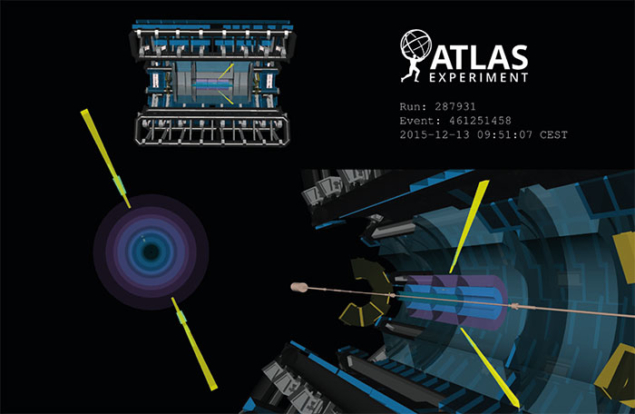
The γγ → γγ process proceeds at lowest order via virtual one-loop box diagrams involving fermions, leading to a severe suppression in the cross-section and thus making it very challenging to observe experimentally. To date, light-by-light scattering via an electron–positron loop has been tested precisely, but indirectly, in measurements of the anomalous magnetic moments of the electron and muon. Closely related observations are Delbrück scattering and photon splitting, both of which involve the scattering of a photon from the nuclear Coulomb field, and the fusion of photons into pseudoscalar mesons observed in electron–positron colliders. The direct observation of light-by-light scattering has, however, remained elusive.
It has recently been proposed that light-by-light scattering can be studied using photons produced in relativistic heavy-ion collisions at large impact parameters. Since the electric-field strength of relativistic ions scales with the square of their charge, collisions lead to huge electromagnetic field strengths relative to proton–proton collisions. The phenomenon manifests itself as beams of nearly real photons, allowing for the process γγ → γγ to occur directly, while the nuclei themselves generally stay intact. Light-by-light scattering is thus distinguished by the observation of two low-energy photons, back-to-back in azimuth, with no additional activity measured in the detector. Possible backgrounds can arise from misidentified electrons from the QED process γγ → e+e–, as well as from the central exclusive production of two photons from the fusion of two gluons (gg → γγ).
The ATLAS experiment has conducted a search for light-by-light scattering in 480 μb–1 of lead–lead data recorded at a nucleon–nucleon centre-of-mass energy of 5.02 TeV during the 2015 heavy-ion run. While almost four-billion strongly interacting events were provided by the LHC, only 13 diphoton candidates were observed. From the expectation of 7.3 signal events and 2.6 background events, a significance of 4.4σ was obtained for observing one of the most fundamental predictions of QED. With the additional integrated luminosity expected in upcoming runs, further study of the γγ → γγ process will allow tests of extensions of the Standard Model, in which new particles can participate via the loop diagrams, providing an additional window into new physics at the LHC.
Further reading
ATLAS Collaboration 2016 ATLAS-CONF-2016-111.
D d’Enterria and G Silveira 2013 Phys. Rev. Lett. 111 080405.





